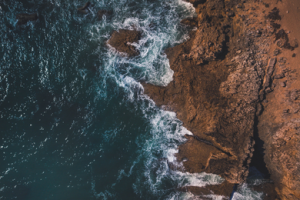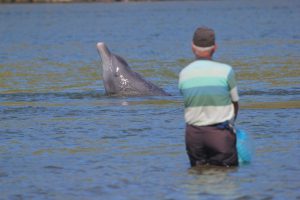
Sustainable development goal 14 is to “conserve and sustainably use the oceans, seas and marine resources for sustainable development” or as it is shortened “life below water”. 1 According to the United States Geological Survey “about 71 percent of the Earth’s surface is water-covered, and the oceans hold about 96.5 percent of all Earth’s water”. 2
As such, water represents the most prevalent and one of the most important elements to sustain life on Earth. In fact, when looking for extraterrestrial life, signs of the presence of water on another planet are seen as signs of the possibility that living organisms might exist there.
A simple, but illustrative example of how humans are connected to the oceans are fishers employed in small-scale fisheries. Ninety percent of fishers are employed in such fisheries 1, meaning that a large proportion of fishers’ livelihoods depend on the health of the oceans. The health of the oceans is affected by human pollution in the shape of plastics and atmospheric pollution.
The ocean absorbs annually around one-quarter of all the carbon dioxide emissions,1 one of the most important greenhouse gases. This leads to acidification of the oceans, setting off a chain of events that negatively affect the oceans, which are the largest ecosystems on the planet. 1 It is estimated that around 20 million tonnes of plastics are released into the oceans through rivers, atmospheric transport, beach littering, and directly at sea via aquaculture, shipping, and fishing activities.3
Recently, there has been media coverage of the relationship between fishers, the ocean, and the incentives created by our current economic system and the technology it produces. In the city of

Laguna in Brazil, declines in fish population, due to overfishing and climate change, and changes in fishers’ livelihoods are endangering a more than a century-old collaboration between fishers and bottlenose dolphins. The dolphins “herd” mullets towards the fishers and give some kind of clue to let them know when to cast their nets, improving the fishers’ catch, and the dolphins gain a better possibility of catching mullets, thus, improving their own nutrition. Researchers have found that “dolphins who team up with fishers gain more food and have an edge in survival, compared with those that hunt without bipedal partners.”4 How can we keep such win-win situations thriving, not only for the sake of tradition but also for the health of the ocean as an ecosystem and also for the mental and economic well-being of fishers? The One Health philosophy can help us understand a new perspective that allows us to connect several dimensions and see how they influence each other.
By: Olga Muñoz PhD | Adjunct Assistant Professor
References
1. United Nations Department of Economic and Social Affairs; Sustainable Development. Sustainable development goal 14. (2022).
2. U.S. Geological Survey. How Much Water is There on Earth? https://www.usgs.gov/special-topics/water-science-school/science/how-much-water-there-earth#:~:text=About 71 percent of the,percent of all Earth’s water. (2019).
3. Lebreton, L. et al. Evidence that the Great Pacific Garbage Patch is rapidly accumulating plastic. Sci. Rep. 8, 4666 (2018).
4. Nuwer, R. A Famed Dolphin-Human Fishing Partnership Is in Danger of Disappearing. Scientific American (2023).
 0
0
